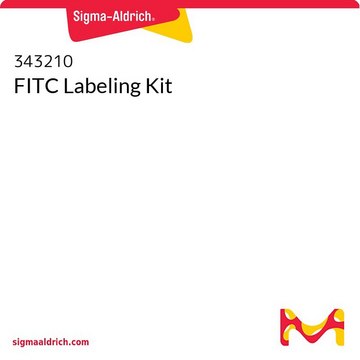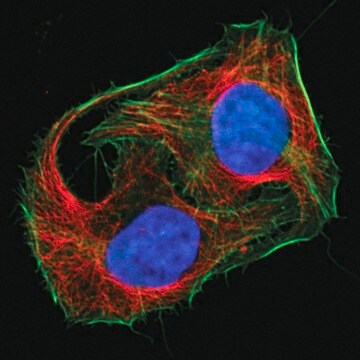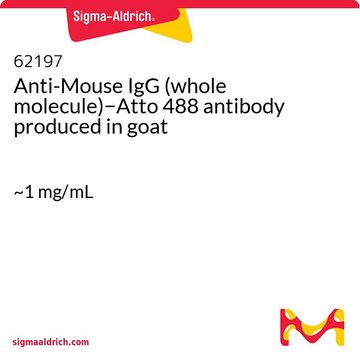38371
Atto 488 Protein Labeling Kit
BioReagent, suitable for fluorescence
About This Item
Prodotti consigliati
Nome Commerciale
BioReagent
Produttore/marchio commerciale
ATTO-TEC GmbH
Fluorescenza
λex 488 nm; λem 520 nm in 0.1 M phosphate buffer, pH 7.0 (recommended)
Compatibilità
suitable for fluorescence
Temperatura di conservazione
2-8°C
Cerchi prodotti simili? Visita Guida al confronto tra prodotti
Categorie correlate
Descrizione generale
Applicazioni
Note legali
Codice della classe di stoccaggio
10 - Combustible liquids
Classe di pericolosità dell'acqua (WGK)
WGK 3
Punto d’infiammabilità (°F)
Not applicable
Punto d’infiammabilità (°C)
Not applicable
Certificati d'analisi (COA)
Cerca il Certificati d'analisi (COA) digitando il numero di lotto/batch corrispondente. I numeri di lotto o di batch sono stampati sull'etichetta dei prodotti dopo la parola ‘Lotto’ o ‘Batch’.
Possiedi già questo prodotto?
I documenti relativi ai prodotti acquistati recentemente sono disponibili nell’Archivio dei documenti.
I clienti hanno visto anche
Articoli
Sigma® offers protein labeling kits based on two types of fluorescent dyes, the Atto dyes and the Tracy dyes.
Il team dei nostri ricercatori vanta grande esperienza in tutte le aree della ricerca quali Life Science, scienza dei materiali, sintesi chimica, cromatografia, discipline analitiche, ecc..
Contatta l'Assistenza Tecnica.





